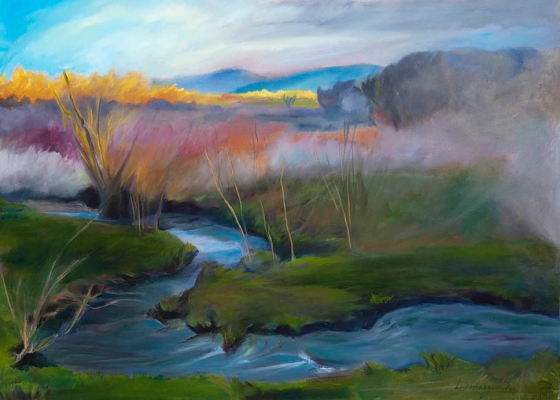-
Wilderness and Wildlife
Ryan Trimbath – Cuyahoga Valley National Park
Jay is joined by Ryan Trimbath, a Biologist at Cuyahoga Valley National Park where he has worked for the last eight years. Prior to working for the NPS, Ryan got a degree in Wildlife & Conservation Biology from Ohio University (2007) then traveled around the country working as a field biologist on various research projects. During this time, he honed his skills as a field biologist and pursued his interests in forest and avian ecology. Ryan has the honor of being the only Ornithologist to ever hold a living Northern Parula x Cerulean Warbler hybrid which he discovered at Deep Lock Quarry in 2014, with a second bird found at Oak Hill in 2015. You can read more about this discovery in the Wilson Journal of Ornithology “Evidence for hybridization between Northern Parula (Setophaga americana) and Cerulean warbler (S. cerulea)” (Trimbath et al. 2019).
This is a two-part interview.
Jihadda Govan – Sand to Snow National Monument
Jay interviews Jihadda Govan, the Monument Manager of Sand to Snow National Monument in Southern California which encompasses 154,000 acres and is co-managed by the Bureau of Land Management (83,000 acres) and U.S. Forest Service (71,000 acres). Jihadda holds a bachelor’s degree from California Polytechnic University, Humboldt, where she studied wildlife management with an emphasis in ornithology, botany, and environmental planning. She grew up in the Pasadena/Altadena areas, where she spent time hiking and exploring in the San Gabriel Mountains which sparked her love of the outdoors. Jihadda has previously worked as a wildland firefighter, wildlife biologist, and wildlife refuge and preserve manager.
-
Wildlife Capsules
-
Field Notes
The Wasps Came In To Die
The wasps came in to die. First one, buzzing and bumping into the living room window, who was soon joined by a few sisters. Within an hour, there were more than 40 sinisterly striped yellow jackets (Vespula alascensis) zooming from one window to another in pursuit of light, and I was outnumbered. …
This Field Note was written by Alyssa Roggow. Would you be interested in writing one? Contact Allison De Jong, Field Notes editor, at adejong [at] montananaturalist [dot] org or 406.327.0405. Please visit the Field Notes website at the Montana Natural History Center for more information.
The Fuzzy Orange Spot of Fall
I had visited Glacier National Park in the summer plenty of times to see its rainbow of wildflowers spread across the mountains. Still, I had never seen the change from summer to autumn colors until I hiked the Highline Trail late last September. …
This Field Note was written by Tricia Erickson. Would you be interested in writing one? Contact Allison De Jong, Field Notes editor, at adejong [at] montananaturalist [dot] org or 406.327.0405. Please visit the Field Notes website at the Montana Natural History Center for more information.
-
The Manic Gardener
Landscaping for Wildlife
Doug Tallamy is not an idiot, so when he talks about a new national park that extends across the entire continent, he’s not proposing to bulldoze cities or tear up freeways. No; he’s talking about converting half the space that now goes to lawns to more productive plantings—plantings that attract insects, especially native ones. And what plants attract native insects? Native ones, of course. (more…)
Minding Your Manure
Some organic gardeners swear by manure. Others swear they’ll never touch it. To the first group, it’s the ultimate one-stop soil conditioner, complete with built-in fertilizers. To the second, conventional manure is contaminated with hormones and antibiotics, and even organic manures can contain human pathogens.
Both groups are right, and the only way to make an informed decision about whether or not to use manure is to become better informed about it. So just how wonderful a conditioner is manure? What problems can it cause? And how can they be managed or avoided? (more…)
Spring Fog · Loretta Domaszewski
